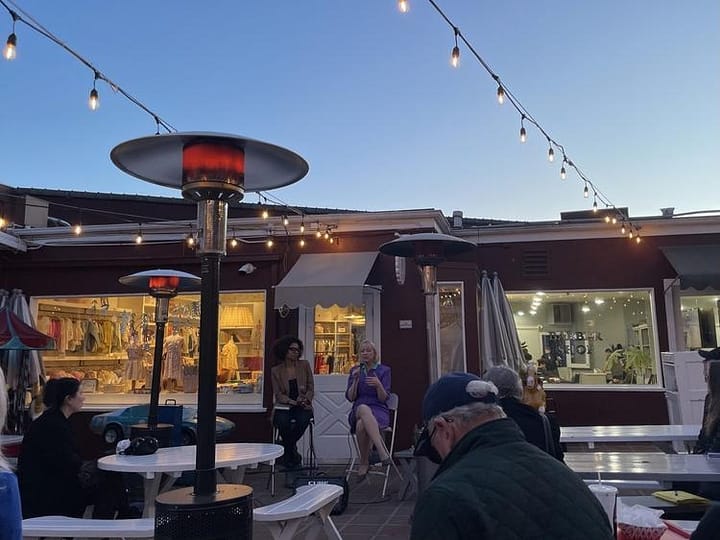JENNIFER CROFT’S DISCUSSION OF THE EXTINCTION OF IRENA REY, DIESEL
A Bookstore
Los Angeles
April 18, 2024
The Białowieża Forest is the last remaining old-growth forest in Europe and has recently been subjected to logging by the Polish government. There is a horse hoof – shaped fungus, Fomes fomentarius, that both devours trees and improves forest health. The first person to study and talk about underground mycelium networks was a woman named Suzanne Simard. Mycelium offers an apt metaphor for translators’ work, in which sentences are layered on top of sentences, creating a broader network of literature. It isn’t possible to translate a 1,000-page book in seven weeks. It also isn’t mandated that translators’ names appear on the covers of books they’ve translated. Jennifer Croft — who, over the course of an hour-and-a-half-long talk, not only mentioned all of the above but also candidly admitted to never having done shrooms — is campaigning to change that final fact.
I went to hear the award-winning translator and author discuss her new book, The Extinction of Irena Rey, with the librettist and writer Sarah LaBrie at DIESEL, A Bookstore last Thursday. Croft and LaBrie sat on chairs in front of the barbershop. I sat behind a man wearing a T‑shirt featuring an image of Laika, the sacrificial Soviet space dog.
Croft, who has a warm presence and soothing voice, immediately demonstrated a propensity for delivering profound statements with a hint of jest. Discussing the “linguistic hierarchy,” in which English sits at the top, she outlined how, once a work is translated into English, it can subsequently be more easily translated into other languages. But translating works into English isn’t easy. “The US professionalizes writing like nowhere else in the world,” Croft observed. She went on to explain how MFAs, an especially American phenomenon, create ideas of what constitutes structurally “good” and “bad” writing — a dynamic that can, in turn, cloud translation. Translators often feel compelled to choose between “being free” and “being faithful” to the original work, with most falling somewhere on a spectrum between these extremes. However, the two main characters in Croft’s story, Emi and Alexis, embody these oppositional traits at their most dramatic.
Though small, the audience was extraordinarily engaged, posing thoughtful questions for nearly 45 minutes after LaBrie had finished with hers. One of the guys who works at DIESEL asked Croft to elaborate on the book’s “ecological bend”: its depiction of the logging of the Białowieża; the metaphor it constructs from Fomes fomentarius’s amadou (a spongy material derived from fungi); and its inclusion of the (fictional) author Irena Rey’s work, which centers on climate change.
“Art can also be responsible for extinction,” Croft responded, half giggling. She recalled a trip she once took to Switzerland to write about the Alps and Lake Geneva, during which she barely left her hotel room. In the experience of creation, which is often an experience of translation (literal or figurative), there’s a sense of destruction — we can’t simply enjoy a sunset without writing a poem about it, she joked. (This particular point was a lot for me to ponder while watching men get unfortunate fades through the barbershop window behind her.)
Naturally, because the talk took place in Los Angeles, a man inquired about film rights … which are available! Following the audience Q and A, LaBrie noted that the novel reads almost like a hallucinogenic experience, and she concluded by asking if Croft considered including a scene where the characters eat magic mushrooms. “You know, I felt like a loser writing this book because I’ve never done shrooms,” Croft replied, adding that the idea could feature in a film adaptation.






